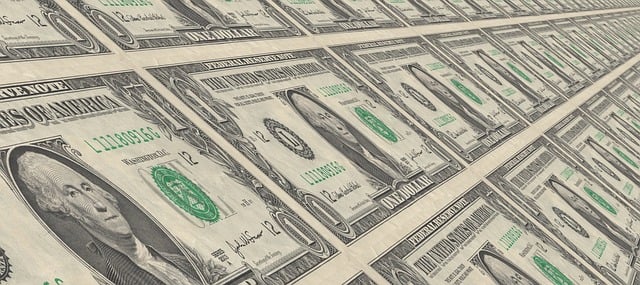
Trade Agreements today, nearly all Western economists support the benefits of free trade, a viewpoint also promoted by international organizations such as the World Bank, the International Monetary Fund (IMF), and the World Trade Organization (WTO). This perspective has been prevalent since the end of World War II, when Western nations established the Trade Agreements on Tariffs and Trade (GATT) in 1947.
However, economic theory has changed significantly since Adam Smith’s time and has developed rapidly since the creation of GATT. To understand U.S. trade policies and plan Trade Agreements, it is useful to review how economic thought has progressed and what it currently recommends.
Read more about The importance of artifical
Read more about Trade agreements on economics
In the 1600s and 1700s, the dominant belief was that a prosperous nation should export more than it imported, using the surplus to build up its wealth in gold and silver. This accumulation of treasure would allow a country to maintain a stronger military and navy, as well as acquire more colonies.
A prominent supporter of this approach, known as mercantilism, was Thomas Mun, a director of the British East India Company. In a letter to his son in the 1630s, he wrote: “The ordinary means therefore to increase our wealth and treasure is by Foreign Trade, wherein wee must ever observe this rule; to sell more to strangers yearly than wee consume of theirs in value…By this order duly kept in our trading,…that part of our stock which is not returned to us in wares must necessarily be brought home in treasure.”
Mercantilists believed that governments should encourage exports and regulate economic activity, including restricting imports if necessary, to ensure a trade surplus. While not every country could maintain such a surplus, mercantilists saw it as an ideal goal, with stronger nations gaining at the expense of weaker ones. They also favored exporting manufactured goods and importing raw materials, as this approach would maximize domestic employment.
Adam Smith challenged these ideas in The Wealth of Nations, published in 1776. He argued that if one country is more efficient at producing one product and another country is more efficient at producing a different product, both nations can benefit from Trade Agreements. Each country could then focus on the product where it has an absolute advantage, increasing overall production compared to a situation without trade. This reasoning suggested a much smaller role for government in economic affairs and supported reducing barriers to trade.
Thirty-one years after the publication of The Wealth of Nations, David Ricardo introduced a significant refinement to the theory in his 1817 work On the Principles of Political Economy and Taxation. Ricardo pointed out that Trade Agreements can take place between countries even when one nation holds an absolute advantage in producing all goods being exchanged.
He demonstrated that what really matters is each nation’s comparative advantage in production. According to the theory of comparative advantage, even if a country can produce all goods more cheaply than another, both countries can still engage in trade in a way that benefits them. The key factor is relative efficiency.
Economists often illustrate this with an example: a lawyer may be better at both legal work and typing than their secretary, but it still makes sense for the secretary to handle the typing so the lawyer can focus on higher-paying tasks. Likewise, if countries concentrate on producing goods where they have a comparative efficiency edge, total output increases, giving consumers access to more goods.
Smith and Ricardo considered labor as the only “factor of production.” In the early 20th century, Swedish economists Bertil Heckscher and Eli Ohlin expanded this theory to include multiple production factors. The Heckscher-Ohlin model posits that a country will export goods that make use of its abundant factors and import goods that require factors it has in shorter supply. Textbooks often illustrate this with a simple model of two countries (England and Portugal) and two goods (textiles and wine). England has relatively more capital, Portugal more labor; textiles require more capital, wine more labor. With these conditions, free trade benefits both nations: England exports textiles and imports wine, increasing overall production and reducing prices for consumers. Studies and economic models generally support that this principle applies across multiple countries and products.
Economists regard the law of comparative advantage as a foundational principle. As Dominick Salvatore notes in his textbook International Economics, it remains “one of the most important and still unchallenged laws of economics … The law of comparative advantage is the cornerstone of the pure theory of international Trade Agreements.”
The principle of comparative advantage applies not only to labor and capital but also to other production factors. These include natural resources, such as land, and technology, which can themselves be categorized further. For instance, land may be suited for farming or mining, technology might be specific to car manufacturing or computer chip production, and labor can be divided into skilled and unskilled categories. Over time, the availability of these factors can change. For example, natural resources like coal may be depleted, or a country may improve its educational system, resulting in a more skilled workforce.
Additionally, some goods rely on different factors of production at various stages of their life cycle. For example, when computers were first developed, their production required significant capital and highly skilled labor. As production scaled up and costs decreased, computers became easier to mass-produce using less skilled labor. Initially, the United States held a comparative advantage in computer production, but today, countries with abundant low-cost labor have become more competitive. Moreover, the same product can use different resources depending on the country. Cotton, for instance, is produced using highly mechanized methods in the United States but is labor-intensive in many African countries. Changes in factor availability do not invalidate the theory of comparative advantage; they simply alter which goods a country can produce more efficiently compared to its trading partners.
Classical economic theories, such as those proposed by Ricardo and Heckscher-Ohlin, rely on several key assumptions, including perfect competition without government-imposed barriers. Another assumption is that production experiences constant or diminishing returns to scale, meaning that producing additional units either costs the same or more. For example, a farmer increasing wheat output may need to cultivate less fertile land or hire more laborers, raising the cost per unit produced.
A further assumption is that primary factors of production—land, labor, and capital—do not cross national borders. While Ohlin assumed these factors were immobile internationally, he suggested that trading goods would tend to equalize factor returns across countries. Later, Samuelson proposed that under free trade, factor prices would actually equalize, an idea known as the factor price equalization theorem. This implies that international trade could lower wages for unskilled workers in high-wage countries while raising wages in low-wage countries, bringing labor compensation in both countries closer to parity relative to capital returns. The broader implications of this concept are explored further in chapter 8.
From a static perspective, the law of comparative advantage suggests that all countries can gain from free trade because consumers can access a greater quantity of goods resulting from more efficient production. According to James Jackson of the Congressional Research Service, trade liberalization “by lowering foreign barriers to U.S. exports and removing domestic restrictions on foreign goods and services, helps strengthen the most competitive and productive industries and encourages the reallocation of labor and capital from less efficient sectors to more productive economic activities.”
Many economists, however, argue that the long-term, or dynamic, benefits of free trade may surpass the short-term, static gains. Dynamic advantages include incentives for firms to improve efficiency to compete internationally, the exchange of expertise and knowledge, the introduction of innovative products, and the potential for enhanced adoption of commercial regulations. Therefore, trade influences both what is produced (static effects) and the methods of production (dynamic effects).
Another key idea in international trade theory is “terms of trade,” which measures the amount of exports a country must provide to receive a certain quantity of imports—the fewer exports required, the better off the country. Terms of trade can change, either benefiting a country or reducing its welfare.
For instance, suppose the United States exports airplanes to Japan and imports televisions, with one airplane initially able to buy 1,000 televisions. If that same airplane can now purchase 2,000 televisions, the United States gains; conversely, if it can only obtain 500 televisions per airplane, its welfare declines.
Several factors can influence terms of trade, including shifts in supply, demand, or government policies. In the previous example, if Japanese demand for airplanes rises, U.S. terms of trade improve because each airplane can fetch more televisions. On the other hand, if Japan begins producing its own airplanes, Japanese terms of trade improve since they have more supply options.
Under certain circumstances, higher productivity in a country can actually worsen its terms of trade. For example, if Japanese television producers become more efficient and lower prices, Japan’s terms of trade decline because it now takes more televisions to exchange for a single airplane.
A nation can also attempt to improve its terms of trade at the expense of others through policies such as imposing an optimal tariff or manipulating its currency. Dominick Salvatore, in his economics textbook, defines an optimal tariff as
“the level of tariff that maximizes the net benefit from the improvement in a nation’s terms of trade, balancing it against the reduction in trade volume. As the tariff improves the imposing nation’s terms of trade, the trading partner’s terms of trade worsen. . . . With both reduced trade volume and deteriorating terms of trade, the partner nation’s welfare decreases, often prompting retaliation. Even if the partner does not retaliate, the gains for the tariff-imposing country are smaller than the losses for the partner, meaning the global economy is worse off than under free trade.”




